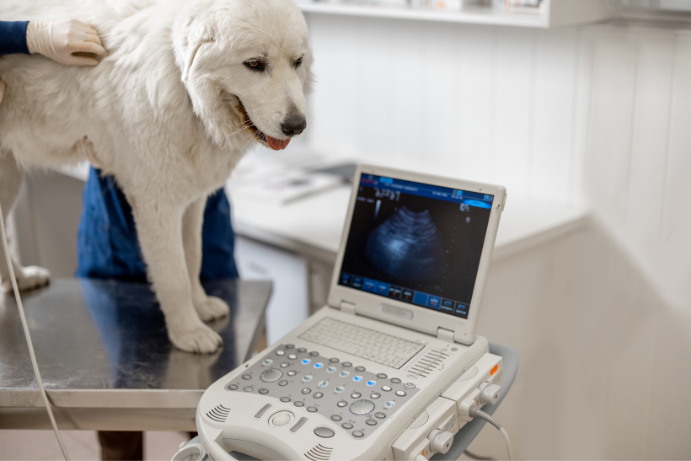
Radiology & Diagnostics for Your Pet’s Well-Being: Modern veterinary medicine has come a long way, and diagnostic tools play a crucial role in pinpointing the cause of your pet’s health concerns. At our clinic, we offer a comprehensive range of radiology and diagnostic services to give your furry friend the best chance at a healthy life. Here’s a closer look at the specific services we provide:
X-ray: X-rays, also known as radiographs, are a fundamental tool in veterinary diagnostics. They utilize invisible electromagnetic waves to create detailed images of your pet’s bones and internal structures. This non-invasive and painless procedure offers a valuable glimpse inside your pet’s body, helping us diagnose a wide range of conditions, including:
While X-rays are a valuable first step, they may not provide detailed information about soft tissues like muscles or organs. This is where other diagnostic techniques come in.
Ultrasound: Ultrasound technology utilizes sound waves to create real-time images of your pet’s soft tissues and organs. Unlike X-rays, ultrasounds are completely painless and do not involve any radiation. This makes them a safe and effective tool for various diagnostic purposes, including:
The ability to provide real-time images and visualize soft tissues makes ultrasound a valuable tool for comprehensive diagnostics.
CT Scans: In some cases, additional detail and definition may be needed for a definitive diagnosis. For these situations, we may recommend a CT scan, a specialized imaging technique that utilizes X-rays to create detailed cross-sectional images of your pet’s body. These images provide a 3D view of your pet’s internal structures, allowing for a more comprehensive evaluation of complex conditions. While CT scans are not as commonly used as X-rays or ultrasounds, they can be invaluable for:






Improving your pet’s health and well-being to guarantee years of happiness and loving friendship.
